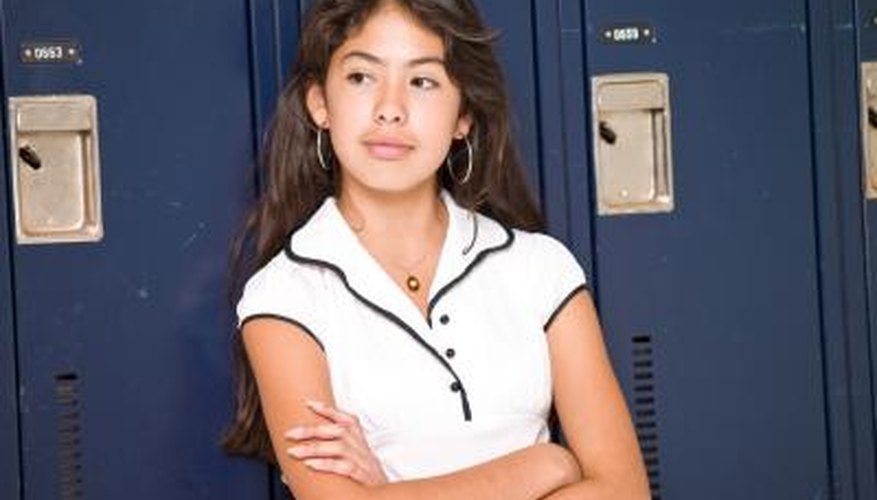In addition to being a place where students can store textbooks and personal belongings, school lockers provide areas where students can congregate with friends and feel a sense of personal space. However, despite the presence of lockers in most middle schools and high schools throughout the United States, they present their share of problems and disadvantages.
Limited Space
Typical lockers are one foot wide, one foot deep and six feet high. This can create space challenges when students are looking to store textbooks, jackets, backpacks, laptops, musical instruments and lunch boxes. The problem can become even bigger during the winter months when students also need to store heavy coats, gloves, scarves and hats. Certain schools like San Jose's (California) Lincoln High School require students to share lockers, which only adds to the space problem.
- Typical lockers are one foot wide, one foot deep and six feet high.
- This can create space challenges when students are looking to store textbooks, jackets, backpacks, laptops, musical instruments and lunch boxes.
Storing of Illegal Objects
According to the National Education Association, more than 100,000 students bring a gun to school each day. The prevailing notion is that these students store the firearms in their lockers. Drugs can also be easily tucked away in lockers. Many schools administer locker searches, where either all lockers are searched on a given day or a drug-sniffing dog sweeps the school to detect anything illegal. However, personal privacy is an issue with this policy. Many argue that it violates a student's Fourth Amendment protection against unlawful search and seizure.
- According to the National Education Association, more than 100,000 students bring a gun to school each day.
- The prevailing notion is that these students store the firearms in their lockers.
Jamming
A common problem with school lockers is jamming. This is often a direct result of lockers being too small to adequately hold all of a student's clothing and supplies. If lockers are too full, they won't open. If they don't open, students typically kick them until they do. Damage to school lockers can become students' responsibility. At Lincoln High School in San Jose, for example, maintenance will only open a locker twice if it jams. If it jams a third time, the locker will be cleaned out and assigned to another student.
- A common problem with school lockers is jamming.
- If they don't open, students typically kick them until they do.
Limitations
Students often think of their school lockers as their own property within the school, places to store not only supplies and belongings, but also pictures, posters and stickers. However, many schools forbid students from displaying personal items in their lockers. At Lincoln High School in San Jose, for instance, students must sign a locker agreement stating that they will not alter the appearance of their lockers in any way. Failure to comply can result in a fine of up to £97.
- Students often think of their school lockers as their own property within the school, places to store not only supplies and belongings, but also pictures, posters and stickers.
- At Lincoln High School in San Jose, for instance, students must sign a locker agreement stating that they will not alter the appearance of their lockers in any way.
